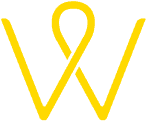
Changing the way an organization functions is a bit like setting off on a grand expedition. We know where we want to go—greater agility, collaboration, and meaning—but the paths to get there are often unclear, dotted with obstacles, and sometimes paved with misunderstandings. Terms like “Holacracy,” “Sociocracy,” or “liberated company” (entreprise libérée) often come up in discussions, but they are sometimes misunderstood or distorted. This creates imaginary expectations and, quite often, disappointment.
With this series of articles, our ambition is simple: to clarify, demystify, and inspire. Each key concept of new management we explore is a potential compass, capable of profoundly transforming an organization—provided one clearly understands what it can (and cannot) offer.
This concise guide, designed as an overview, will accompany you in exploring these 19 concepts. Whether you are simply curious to learn more or you’re searching for ways to reinvent your governance, this overview will give you the keys to navigate an environment where trends and buzzwords sometimes lack tangible solutions.
Because Sémawé operates with Holacracy, we will highlight for each concept how it differs from or resembles Holacracy’s principles. We acknowledge the subjective perspective we bring to these systems, as our own experience strongly shapes how we perceive the world.
Overview of the Concepts
1. Holacracy
Created in 2004, Holacracy is a governance system based on an open-source constitution distributed under a CC-by-SA license. It establishes clear rules for distributing authority and responsibilities within an organization. This unique model blends the rigor of hierarchical structures with the flexibility of horizontal aspirations, thereby ensuring an organization that is both functional and efficient. With around 1,500 companies having adopted it worldwide, Holacracy is known for its innovative mechanisms: well-defined roles, interconnected circles, and robust decision-making processes. It addresses the dual challenges of structure and agility, which are crucial for modern organizations.
Much like the standardized legal documents one might use to form a company, the Holacracy Constitution is a generic kit that can be adapted or modified by any organization wishing to use it. This saves considerable time and leverages the experience of others that have paved the way!
- Map of organizations practicing Holacracy [FR]
- Attend a Holacracy discovery day [FR]
- See a case study on adopting Holacracy [FR]
2. Shared Governance
An approach developed and promoted in part by l’Université du Nous [FR], shared governance describes a set of practices and principles that enable a group to make decisions collectively. Unlike Holacracy, shared governance is not based on a formal constitution or universal framework; instead, it offers flexibility that allows organizations to co-create their own processes. Concretely, it relies on structured tools to share decision-making power, foster active participation, and strengthen collective accountability. It aims to balance individual and collective aspirations while shifting away from hierarchical models.
3. Sociocracy
Sociocracy is a governance model based on consent, decision-making circles, and double links. It was formalized in the 20th century by Dutch engineer Gerard Endenburg to enhance collaboration and efficiency in organizations. Its central principle is consent: decisions are made when no one has a reasoned objection. Semi-autonomous circles are interconnected by members who serve as links, ensuring coherence between different levels of the organization.
Sociocracy does not imply the absence of structure or hierarchy: although it values collective participation, it relies on clearly defined roles and processes. Nor is it simply a democratic decision-making tool; it is a comprehensive framework governing organizational structure, accountability, and member interactions. Adaptable and inclusive, this model is often used in cooperatives or associations, but it also inspires companies aiming to strengthen internal democracy.
4. Cellular Governance
Cellular governance [FR] is an emerging approach inspired by biological systems, in which each unit of an organization functions like an autonomous yet interdependent cell. Drawing in part on the principles of the Holacracy Constitution, it incorporates roles, circles, and distributed authority while adding a more organic and adaptive vision.
Under this model, cells hold their own authority to make decisions, while remaining aligned with the broader organization through cooperative mechanisms. Contrary to Holacracy, cellular governance explicitly opts for horizontality, removing hierarchical elements. It aims not to impose centralized control but to foster fluid interactions and collective resilience.
5. Teal Organization
Popularized by Frédéric Laloux in Reinventing Organizations, a Teal Organization describes a new stage in organizational evolution. It rests on three core pillars: self-management, wholeness, and an evolutionary purpose.
- Self-management replaces traditional hierarchies with collaborative processes that allow everyone to contribute according to their skills.
- Wholeness invites integrating all aspects of the individual at work, emphasizing authenticity and personal growth.
- Evolutionary purpose focuses on the organization’s raison d’être, viewed as a living entity that adapts and evolves based on changes in its environment.
Unlike purely structural models such as Holacracy, a Teal Organization places greater emphasis on cultural and human transformation, which can be challenging in contexts where resistance to change is strong. Nonetheless, it remains a major source of inspiration for organizations seeking to reconcile performance with humanity.
6. Liberated Company
Often overused, this concept focuses on removing constraints to foster creativity. The liberated company [FR], popularized by Isaac Getz and Brian Carney, aims to grant employees full freedom in how they organize themselves and work. Here, leadership’s role is to create an environment where employees can make decisions independently, unfettered by rigid hierarchical rules.
This concept is based on the idea that shedding unnecessary regulations and bureaucratic processes unlocks a team’s creative and productive potential. It does not lack structure: the liberated company needs a clear framework built on trust to function effectively.
Unlike Holacracy or Sociocracy, the liberated company does not provide a formal methodology. It is more about cultural transformation, with leadership centered on support and inspiration. Though this model has inspired many organizations, its application heavily depends on leadership vision and commitment.
7. Perma-Entreprise
Inspired by permaculture, the perma-entreprise applies the principles of sustainability, balance, and resilience to the business world. This model encourages organizations to function like ecosystems, where each element is optimized to collaborate harmoniously with the others while respecting available resources.
Core principles include thoughtful use of human and material resources, establishing virtuous cycles, and maintaining a long-term view. Unlike purely economic models, perma-entreprise emphasizes environmental and social impact, seeking to deliver value not only for the company but also for its broader environment.
Compared to Holacracy, a perma-entreprise places a stronger emphasis on ecological and societal impact, whereas Holacracy focuses mainly on organizational structure and role distribution. Both adopt a systemic perspective, but a perma-entreprise explicitly incorporates ethical and ecological principles into its governance.
8. Distributed Leadership
In distributed leadership, leadership is not concentrated in the hands of a single individual or small group; instead, it is shared throughout the organization. Each person can exercise leadership within a specific area, according to their role and expertise.
This model relies on mutual trust and empowerment, enabling people to make informed decisions without waiting for hierarchical directives. By moving away from traditional power structures, distributed leadership fosters swift decision-making more closely aligned with on-the-ground realities.
Initially formalized by James P. Spillane, Richard Halverson, and John B. Diamond in the 2000s in their research on school management, the concept has since expanded to other organizational contexts, highlighting collaborative governance and collective decision-making.
Compared to Holacracy, which formalizes roles and decision-making processes, distributed leadership is more fluid and informal; responsibilities emerge naturally based on the organization’s needs. It is especially suited to complex, rapidly changing environments where agility and collaboration are vital.
9. Montessori Management
Montessori management [FR] takes its inspiration from the educational principles of Maria Montessori and brings them into the workplace. This approach emphasizes autonomy, trust, and personal responsibility, creating an environment that fosters continuous learning and organic collaboration.
The central idea is to consider each employee a self-directed individual who thrives in a structured environment that stimulates creativity and engagement. Managers act as guides or facilitators rather than authoritarian directors, ensuring that team members have the necessary resources to flourish in a supportive and high-performing setting.
Compared to Holacracy, which focuses on structuring roles and processes, Montessori management places a greater emphasis on personal development and adaptability. This model is particularly effective for organizations wanting to merge performance with individual fulfillment.
Examples of organizations:
- Clinitex [FR]: Thierry Pick drew on Montessori principles to develop “management by appetite.”
- My Human Kit: applies Montessori principles to encourage autonomy and creativity within its collaborative manufacturing teams.
- Living School: a school and educational organization inspired by Montessori pedagogy, incorporating these principles into internal management.
- La Ruche qui dit Oui! [FR]: fosters self-organization in its local teams within a structured framework, in a Montessori-like spirit.
10. Self-Organized Organization
A self-organized organization is more a direction than a strict model. It relies on teams that manage their own responsibilities and make decisions without direct hierarchical oversight. This type of organization highlights trust, individual and collective accountability, and the ability of teams to structure themselves according to their needs.
Key principles include power redistribution, flexible roles, and continuous adjustment to address real-time challenges. Self-organization does not mean the absence of structure: it requires clear agreements, collaborative tools, and shared principles to operate efficiently.
Compared to Holacracy, which formalizes decision-making processes through roles and circles, self-organization tends to be more informal and emergent. It is especially pertinent to dynamic environments requiring agility and innovation.
11. Organizational Agility
Organizational agility is a company’s ability to adapt rapidly and effectively to shifts in its technological, economic, or social environment. It is guided by the foundational principles of the Agile Manifesto, which defines four key heuristics:
- Individuals and interactions over processes and tools
- Working software over comprehensive documentation
- Customer collaboration over contract negotiation
- Responding to change over following a plan
Core principles of organizational agility include
- A strong customer focus, where market demand drives priorities
- Autonomous multidisciplinary teams able to make decisions fast
- Short cycles of experimentation and learning to refine strategies
While rooted in agile software development, this approach is applied enterprise-wide to maximize resilience and competitiveness. In contrast to models such as Holacracy, which sets formal structures for interactions and roles, organizational agility emphasizes continuous adaptation and iterative improvement of practices.
Although Holacracy sits within the broader agile movement, it goes further in defining authority and rules. Where agility stresses flexibility and innovation, Holacracy offers a structured governance framework clarifying who holds decision-making power, thereby enabling organizations to evolve through explicit governance mechanisms.
Organizational agility is highly valued in sectors undergoing constant disruption, such as tech, where companies like Spotify and ING Bank have embraced enterprise agility to transform their operations.
12. Fractal Organization
The fractal organization [FR] serves more as a metaphor than a formal model. Inspired by the mathematical principles of fractals, it suggests that each unit of an organization reflects the structure and values of the whole, akin to natural or biological systems.
Companies adopting this approach aim to establish autonomous, interconnected units capable of operating independently while contributing to the broader mission or objectives.
Core features:
- Local autonomy: each unit (or fractal) manages its operations to meet local needs.
- Replication of principles: key values and foundational processes are replicated throughout all units.
- Flexibility and adaptability: units can evolve or reorganize in response to changes in the environment.
However, the fractal organization does not provide a normative framework or universal methodology. Instead, it is an inspirational concept, often deployed in complex, fast-moving settings to promote resilience and innovation.
Holacracy itself can be described as a fractal organizational system.
13. Management 3.0
Conceived by Jurgen Appelo and protected as a registered trademark, Management 3.0 is an innovative approach that places humans, collaboration, and creativity at the core of organizations. Rather than a strict set of rules, it is a flexible toolbox to help managers act as catalysts.
Its six main principles include:
- Align constraints: define a clear framework and shared objectives.
- Develop competence: encourage learning and individual growth.
- Empower teams: grant decision-making authority to employees.
- Grow the structure: optimize interactions across the organization.
- Improve everything continuously: promote cycles of learning and iteration.
- Enhance relationships: build a work environment founded on trust and mutual respect.
Management 3.0 does not propose a specific blueprint for organizational charts or power distribution. Unlike Holacracy, which structures governance through defined roles and circles, Management 3.0 allows organizations to adapt their structures freely to meet their needs. The focus is on human dynamics, team motivation, and continuous improvement.
Compared to Holacracy, which heavily formalizes processes and governance, Management 3.0 is more informal and human-centered. Where Holacracy structures roles, Management 3.0 provides practical tools to boost team motivation and engagement.
14. Sociocracy 3.0
Sociocracy 3.0 (S3) is a flexible collaboration and governance framework designed to help organizations become more agile, resilient, and people-centered. It combines elements of classic Sociocracy, agile methods, and Lean practices while remaining highly adaptable to the particular needs of each team and organization.
Key principles of S3 include:
- Consent-based decision-making: decisions are reached when no significant objections remain, which helps achieve quick and inclusive outcomes.
- Surfacing tensions: tensions are treated as opportunities to improve and guide organizational evolution.
- Patterns: a set of reusable, flexible practices that allow teams to address specific problems while respecting their unique contexts.
Unlike frameworks such as Holacracy, Sociocracy 3.0 is not trademarked. It is distributed under a Creative Commons Free Culture License, permitting free use and open adaptation. This decentralized approach encourages users to share and modify resources as needed.
S3 can also be seen as a toolbox of collective intelligence practices. Through its patterns, it delivers practical, flexible solutions to strengthen collaboration, address tensions, and update organizational practices.
Organizations in fields like tech, education, and the nonprofit sector already employ S3 to bolster governance and deepen collaboration.
15. Humanist Enterprise
A humanist enterprise places human values and individual fulfillment at the heart of its strategy and operations. This concept is based on the belief that economic performance and employee well-being are interdependent, and that an organization prospers by honoring the dignity, diversity, and creativity of its members.
Core principles include:
- Respect for the individual: each person is considered holistically, with their needs, aspirations, and constraints.
- Benevolent leadership: leaders focus on guidance, listening, and caring for employees.
- Positive societal impact: the organization aims to contribute to the common good, beyond just financial success.
Authors such as Jacques Lecomte (Les entreprises humanistes) and Isaac Getz (L’entreprise altruiste) have played a major role in shaping and sharing this concept, underscoring the connection between kindness, efficiency, and positive societal outcomes. Similarly, the work of Frédéric Laloux in Reinventing Organizations and the ideas of Viktor Frankl on the pursuit of meaning have influenced this approach.
Contrary to models like Holacracy or Sociocracy, the humanist enterprise does not prescribe a strict framework or processes. It instead prioritizes cultural transformation and behaviors that foster a harmonious yet high-performing organization.
Companies like Danone or Patagonia endorse this philosophy, highlighting practices that unite profitability with respect for human values.
16. Self-Management
Self-management refers to an approach in which individuals and teams are fully autonomous in organizing their work, making decisions, and managing responsibilities without the need for a conventional hierarchy. It is grounded in mutual trust, empowerment, and clear frameworks to maintain coherence.
Defining traits include:
- Decentralized decision-making: employees make local choices based on their expertise and roles.
- Transparency: fair access to information so everyone can understand context and priorities.
- Individual accountability: each person is deeply engaged with their tasks and owns the results of their decisions.
Compared to Holacracy, which provides an explicit system for structuring roles and circles, self-management is less formal and more focused on individual and group autonomy. It also resonates with a vision of workplace fulfillment in which employees are encouraged to innovate and collaborate with minimal restraints.
Companies like Morning Star, known for its no-manager structure, or Buurtzorg, a network of self-organizing nurses, exemplify successful self-management in action.
17. Social Doctrine of the Church
The Catholic Church’s social doctrine is a collection of principles and guidance aimed at shaping social, economic, and political interactions from a humanistic and ethical standpoint. It draws on key documents such as papal encyclicals (Rerum Novarum by Leo XIII, Quadragesimo Anno by Pius XI, and Pope Francis’ Laudato Si’) and lays out teachings applicable to societal life.
Core principles include:
- Human dignity: each individual possesses an inalienable worth and must be respected in all aspects.
- Common good: social and economic structures should promote the collective good, not just individual interests.
- Subsidiarity: decisions should be made at the closest level to those affected, while higher levels provide necessary support.
- Solidarity: cooperation among individuals and communities is critical for creating a fair and equitable society.
Examples of organizations in France that draw on these principles:
- Entrepreneurs et Dirigeants Chrétiens (EDC) [FR]: a network of Catholic business leaders advocating a leadership style aligned with the Church’s social teaching.
- La Nef [FR]: an ethical banking cooperative that finances projects respectful of both people and the planet.
- Fondation Jean Rodhain [FR]: dedicated to social and solidarity-based initiatives, consistent with ideals of social justice and human dignity.
Compared to approaches such as the humanist enterprise, the Church’s social doctrine incorporates an explicitly spiritual dimension, anchored in a transcendent vision of human responsibilities.
18. Regenerative Company
The regenerative (or regenerating) company is an emerging concept that goes beyond sustainability by intentionally aiming to restore ecosystems, communities, and resources. Inspired by the principles of natural regeneration and permaculture, it strives to produce a net positive impact on both the environment and society.
Key elements include:
- Ecological restoration: restoring or improving natural ecosystems through respectful, innovative practices.
- Positive societal impact: supporting local communities, reducing inequalities, and fostering lasting collective well-being.
- Circular economy: rethinking business models to eradicate waste and optimize resource reuse.
Compared to ideas like the perma-entreprise or humanist enterprise, the regenerative company places an even stronger emphasis on actively improving natural and social systems. Its goal is not merely to reduce negative impacts but to yield measurable benefits for the broader environment in which it operates.
Companies such as Patagonia or Interface are frequently referenced as models of regenerative initiatives, thanks to their environmental commitments and actions to repair ecosystems affected by their operations.
General Comparison and Interconnections
Although these concepts share common goals—autonomy, resilience, collaboration—they differ in their approaches and implementation. For instance, Sociocracy and Holacracy are often compared, but they diverge in their mechanisms for decision-making.
A comparative chart (coming soon) will help you visualize the differences and similarities among these concepts.
Guide to Choosing the Right Framework
There is no one-size-fits-all solution. Selecting a framework depends on several factors:
- The size of your organization
- Your current corporate culture
- Your strategic objectives
- The level of team engagement
If you’re uncertain, Sémawé offers personalized diagnostics to help you identify the best approach.
- Take an online quiz to find out if your organization is ready to adopt Holacracy [FR]
- I’d like an organizational audit [FR]
Looking for clarity in transforming your organization? Contact us for a personalized diagnostic and discover how to apply these concepts to your reality.
This post was originally published in French and has been translated into English by HolacracyOne.
To learn more about self-management, join a community of pioneers and check out our e-courses → Self-Management Accelerator
This article was originally published on Sémawé's Blog.




